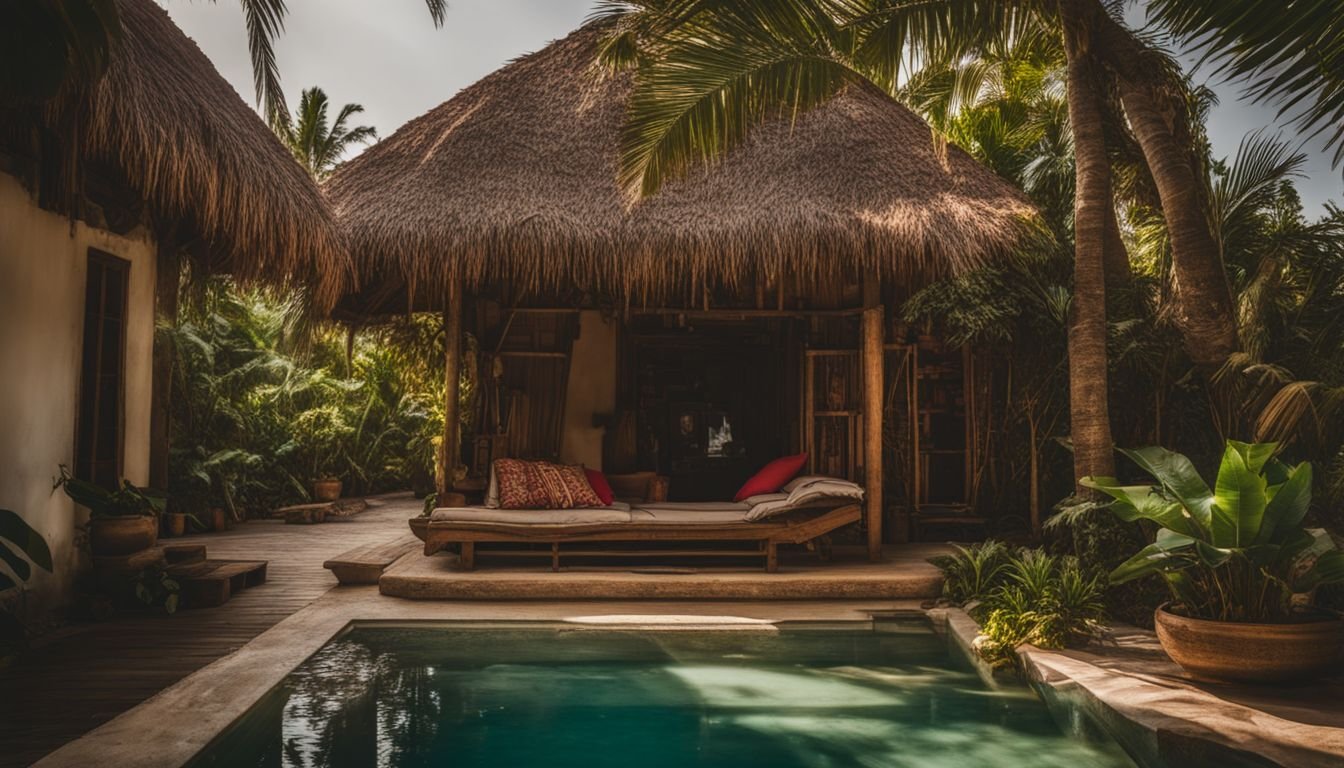Have you ever found yourself dreaming of adding a splash of green to your home, only to be put off by the seemingly endless choices and care instructions that come with indoor plants? You’re not alone.
It’s pretty common to feel a bit stumped when it comes to picking the perfect plant, especially if you’re after something that looks great but doesn’t ask for much in return. That’s where the Zanzibar Gem, or Zamioculcas zamiifolia as those in the know call it, steps into the spotlight.
With its shiny leaves and laid-back vibe when it comes to care requirements, it’s quickly become a hit amongst Aussie plant enthusiasts.
Like many Aussies, we were drawn in by this tough little plant’s charms but weren’t quite sure how to kick things off. A cool fact that caught our attention is how despite its lush vibes, the Zanzibar Gem is actually brilliant at storing water in its foliage which makes it incredibly drought-tolerant – talk about an easy-going mate! Keen to share our newfound knowledge and make your life easier, we’ve done all the digging and gathered everything you need from putting hands on the ideal pot size through to understanding its somewhat mysterious blooming habits – making your path towards nurturing your very own Zanzibar Gem as smooth as can be.
So gear up; it’s time to give your space a touch of enduring greenery!
Key Takeaways
- Zanzibar Gems thrive in low-light conditions and prefer indirect, filtered sunlight. They should be placed near a north-facing window or behind sheer curtains to protect them from direct sun.
- When it comes to watering, let the soil dry out completely before giving the plant a good soak. Over – watering can cause root rot, so it’s better to water less often.
- These plants do well in warm environments (between 15°C and 24°C) and must be protected from frost. If you live in a colder region of Australia or New Zealand, consider moving your Zanzibar Gem indoors during cooler months.
- The Zanzibar Gem is known for its drought tolerance thanks to its ability to store moisture in its leaves, making it an ideal choice for gardeners who might not always remember to water their plants.
- While flowering is rare, creating a similar environment to its natural habitat by ensuring warm and humid conditions with ample indirect light may encourage your Zanzibar Gem to flower. However, they are primarily appreciated for their lush green foliage.
Ideal Conditions for Growing Zanzibar Gem

Fostering the growth of a Zanzibar Gem thrives on striking the perfect balance in its environment. We’ll dive into how just the right amount of light, water, and warmth can turn your space into a sanctuary for this glossy-leaved beauty.
Preferred light conditions
We understand that our fellow Australians have a deep love for gardening, and we’re here to guide you in providing your Zanzibar Gem with the perfect light conditions. This remarkable houseplant thrives best in low-light environments.
It’s a common myth that all plants require bright sunlight to flourish, but the Zanzibar Gem is an exception. Placing it in an area where it receives indirect, filtered sunlight will ensure its glossy foliage remains vibrant and healthy.
To maintain the lush appearance of your Zanzibar Gem, avoid exposing it to direct sunlight for extended periods. This can lead to leaf burn and may compromise its water storage capabilities, crucial for its survival during dry spells.
We recommend finding a spot in your home where natural light is present but not overwhelming. This could be near a north-facing window or behind sheer curtains that diffuse the harsh rays of the sun.
Choosing the right location plays a critical role in meeting your plant’s needs without requiring constant attention from you. Keep these tips in mind, and watch as your Zanzibar Gem becomes a stunning feature of your indoor garden collection, proving once again that beauty doesn’t always demand brightness.
Watering requirements
Transitioning from light to water, Zanzibar Gem’s needs are just as forgiving when it comes to hydration. This plant thrives on less rather than more, making it perfect for those of us who might forget a watering or two.
The key is to let the potting mix dry out completely before giving it a good soak. This approach helps mimic the natural drought conditions the Zanzibar Gem adapts so well to.
Over-watering can prove harmful, leading to root rot – an issue no plant lover wants to face. Therefore, we suggest checking the top soil; if it feels dry a few centimetres down, that’s your cue for its next drink.
Adapting this routine ensures your Zanzibar Gem receives just enough water without overwhelming it.
In line with providing optimal care, understand that each Zanzibar Gem might have slightly different needs depending on its environment and pot size. Observing your plant’s response after watering will guide you in fine-tuning this balance.
Remember, a happy Zanzibar is one that gets attention only when truly necessary – embodying our love for plants through thoughtful neglect.
Temperature and frost protection
We need to pay close attention to the Zanzibar Gem’s temperature preferences. This plant thrives in warm environments and doesn’t handle cold well. Keep it away from frosty windows in winter and aim for a consistent temperature range between 15°C and 24°C.
If you reside in parts of Australia or New Zealand where temperatures dip lower, consider moving your Zanzibar Gem indoors during colder months.
Protecting your Zanzibar Gem from frost is crucial for its survival. Frost can damage the leaves, leading to a less vibrant plant. To guard against sudden drops in temperature or unexpected frosts, use a frost cloth overnight when forecasts predict chilly weather.
Making sure our beloved green mate stays cosy will ensure its glossy leaves continue to beautify our homes without interruption.
Caring for Mature Zanzibar Gem

We find ourselves closely monitoring our Zanzibar Gems as they mature, keenly observing their needs and changes. This attention helps us understand how to keep them thriving, leading us to discover more about their unique care requirements.
Dealing with dry conditions
In our beautiful, sun-baked corner of the world, dry conditions are a common challenge for gardeners. Fortunately, the Zanzibar Gem thrives in these environments. Its resilience makes it a perfect companion for Aussie plant lovers who sometimes forget to water their green mates or those living in areas where water is scarce.
We love how this gem adapts by storing moisture in its thick, glossy leaves, allowing it to go without water for weeks at a time.
We ensure our plants get the right start by planting them in well-draining soil and placing them in spots that mimic their natural habitat – warm and somewhat shaded from direct sunlight.
This not only helps manage dry spells but also encourages healthy growth without constant attention. Periodically checking the soil before watering eliminates guesswork; if it’s dry an inch below the surface, it’s time to give your plant a drink.
Caring for Zanzibar Gems teaches us patience and attentiveness – qualities every gardener values. These plants remind us that beauty doesn’t demand perfection or daily diligence. They flourish with minimal intervention, making them ideal for both seasoned gardeners and novices eager to green their spaces without fuss or worry about late fees on nurturing efforts.
Understanding the plant’s rare flowering process
Many gardeners treasure the Zanzibar Gem for its lush, green foliage, yet few have witnessed its rare flowering process. This exotic plant flowers infrequently and under specific conditions that can challenge even the most dedicated green thumbs amongst us.
Understanding this unique aspect requires patience and a keen attention to the plant’s needs.
The secret lies in mimicking the Zanzibar Gem’s natural habitat as closely as possible. It thrives in warm, humid environments with indirect light, which are key factors that encourage it to flower.
Ensuring these conditions are met consistently can sometimes lead to the surprise of small, inconspicuous flowers emerging – a rewarding sight for any plant lover.
We also focus on providing our plants with optimum care without expecting them to flower regularly. This approach not only keeps our expectations realistic but also allows us to appreciate their rare beauty when it does occur spontaneously.
Observing your Zanzibar Gem flourish healthily is a pleasure in itself, whether or not you’re lucky enough to witness its elusive blossoms.
Location and Placement Options for Zanzibar Gem
Choosing the right spot for your Zanzibar Gem can make a big difference in its growth and health. Whether you plan to keep it indoors or give it a space outside, we’ll guide you through finding the perfect location that ensures your plant thrives.
Indoor placement
We often find the Zanzibar Gem making a perfect indoor companion due to its love for low-light conditions. This quality makes it ideal for brightening up those dimmer corners of your home where other plants might not thrive.
Its slow-growing nature and minimal water requirement — only once a month — ensures it’s hassle-free, fitting well into our busy lifestyles.
Placing this resilient plant indoors also allows us to enjoy its lush, glossy leaves up close, adding a touch of green elegance to any room without demanding too much attention or care.
The Zanzibar Gem truly thrives on neglect, making it an excellent choice for both seasoned gardeners and beginners alike in Australia who are looking for an undemanding yet beautiful houseplant.
Outdoor placement
Placing the Zanzibar Gem outdoors requires a bit of know-how, especially for us Aussies who enjoy our diverse climate. This resilient plant thrives in warm, shaded areas where direct sunlight is minimal.
Think about positioning it under a covered patio or within the embrace of larger plants that can offer protection from harsh afternoon rays. Ensuring your Zanzibar Gem receives morning light yet stays cool during scorching afternoons will mimic its natural habitat and promote health and growth.
Watering demands change when the gem steps outside. Unlike indoor care, outdoor gems may need more frequent watering to combat increased evaporation rates, but always check the soil moisture first—it should be slightly dry before giving it another drink.
During particularly hot spells, a mulch layer around your plant can help retain soil moisture and keep roots happy.
As gardeners keen on seeing our green friends thrive, adjusting to seasonal changes forms part of our routine care tactics for these gems outdoors. Monitoring temperature shifts closely ensures we move them indoors if frost threatens or an Aussie heatwave kicks in.
Meshing with nature’s rhythm allows us to cultivate lush, vibrant Zanzibar Gems as integral parts of our garden sanctuaries.
Further Reading on Plant Care and Enjoyment
Diving deeper into plant care and enjoyment opens up a whole new world for us. We uncover fresh insights on nurturing not just Zanzibar Gems but a wide variety of plants that thrive under similar conditions.
Books, blogs, and community forums dedicated to gardening in Australia offer valuable knowledge tailored to our unique climate and conditions. They guide us through selecting the right plants for our home environments, be it indoors or outdoors, ensuring we make informed decisions about light, watering schedules, and temperature needs.
Exploring these resources also unveils creative ways to display our green friends. Ideas range from minimalist indoor setups using sleek pots that complement modern decor to vibrant outdoor gardens teeming with life.
These readings inspire us to experiment with arrangements that enhance the aesthetic appeal of our homes while catering to the specific needs of each plant. We learn how companion planting can help create micro-environments where plants support each other’s growth.
Moreover, joining local gardening clubs or online communities brings an added layer of joy and learning. It connects us with fellow enthusiasts who share their experiences and tips on plant care nuances specific to various Australian regions.
Through these interactions, we gain practical advice on overcoming challenges such as pests or unusual weather patterns affecting our garden’s health. Each shared story becomes a lesson in resilience and creativity in gardening practices, encouraging us all to grow along with our beloved plants.
Conclusion: Enjoying Your Zanzibar Gem
Embrace the journey of growing a Zanzibar Gem. Its rare flowering and resilience in dry conditions make it a unique addition to any Australian home. With the right pot size and placement, these plants thrive indoors and outdoors.
Your effort pays off as you watch your Zanzibar Gem flourish. Cherish every moment with this beautiful plant by your side.
FAQs
1. Can I buy a Zanzibar Gem online with my credit card?
Absolutely! You can purchase a Zanzibar Gem online using either a debit or credit card. Most Australian gardening stores offer secure payment options for your convenience.
2. Is it possible to get same day delivery for the Zanzibar Flower in Australia?
Yes, thanks to services like AusPost, some retailers offer same day delivery for Zanzibar Flowers within Australia. Ensure you check the eligibility criteria and terms at afterpay.com/en-au/terms if you’re considering this option.
3. Do residents of New Zealand have access to the same offers as those in Australia when buying a Zanzibar Gem?
Residents of New Zealand often enjoy similar purchasing benefits as those in Australia, including using Afterpay and accessing various shipping options. However, it’s wise to review specific eligibility criteria and terms before making a purchase.
4. What should I look out for when using Afterpay to buy Zanzibar Gems?
When using Afterpay for your Zanzibar Gem purchase, make sure you understand the repayment terms outlined at afterpay.com/en-au/terms. This ensures no surprises later on and allows you to enjoy your new plant without any financial stress.
